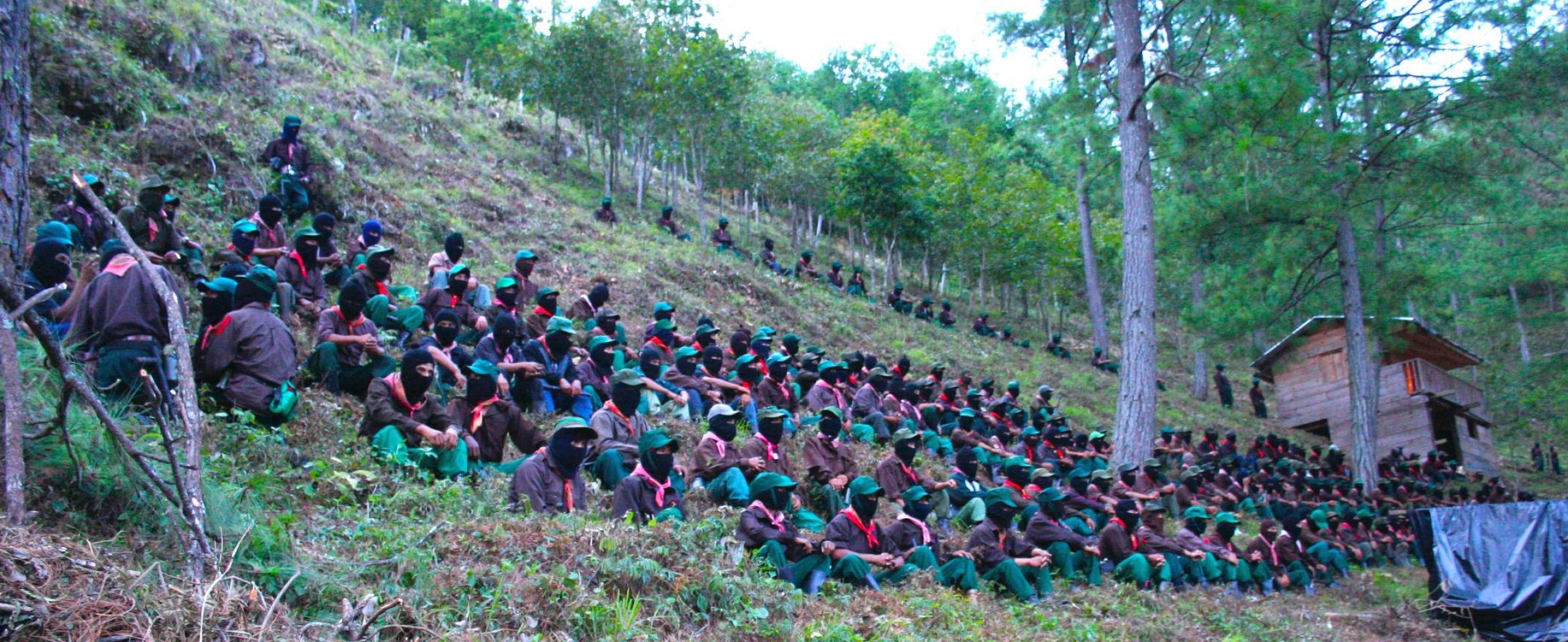
by DGR News Service | Aug 30, 2019 | Defensive Violence, Indigenous Autonomy, Obstruction & Occupation, Reclamation & Expropriation
Editors note: this article contains material excerpted from an August 2019 Communique from the Indigenous Revolutionary Clandestine Committee—General Command of the Zapatista Army for National Liberation, Mexico. Image by Nick Rahaim, CC BY-NC-SA 2.0
August 17, 2019
We bring you our word. The same word as yesterday, today, and tomorrow. It is the word of resistance and rebellion.
In October of 2016, almost three years ago, during the 20th anniversary of the National Indigenous Congress [CNI], the sister organizations of the National Indigenous Congress and the EZLN made a commitment to go on the offensive in our defense of our Territory and Mother Earth. Persecuted by the bad government, by caciques, by foreign corporations, by criminals, and by the law, and as we accumulated insults, derision, and dead, we the originary peoples (the guardians of the earth), decided to go on the offensive and circulate the words and actions of resistance and rebellion.
…
The appearance of this new [presidential] administration has not fooled us. We know that the real boss has no other homeland than money, and that this same boss rules in the immense majority of the world’s plantations that they call “countries.” We also know that rebellion, dignity, and rage are absolutely prohibited. Despite that, all over the world, in its most forgotten and despised corners, there are human beings who resist being devoured by this machine and who refuse to give in, give up, or sell out. These people have many colors, they carry many flags, they come dressed in many languages, and their resistance and rebellion is enormous.
The big boss and his overseers build walls, borders, and sieges to try to contain these people who they claim are bad examples. But they never achieve their goal because dignity, courage, rage, and rebellion can’t be held back or incarcerated. Even if they hide behind their walls, borders, sieges, armies, police forces, laws, and executive orders, sooner or later that rebellion will come asking for its due. On that day there will be neither forgetting nor forgiveness.
We know that our freedom will only come about through our own work as originary peoples. With the appointment of the new overseer to Mexico, the same persecution and death has continued. Within only a few months [of his administration], at least a dozen of our compañeros of the CNI-CIG who were in the struggle were murdered. Among the dead was a brother much admired by our Zapatista communities—Samir Flores Soberanes.
Samir was murdered after having been singled out by Mexico’s overseer who, despite Samir’s death, marches on with the neoliberal megaprojects that will disappear entire peoples, destroy nature, and convert the blood of our originary peoples into profits for powerful capitalists.
Because of this, in honor of our Brothers and Sisters who have died, been jailed, or are persecuted or disappeared, we decided to name the Zapatista campaign that ends today and that we are now making public: “SAMIR FLORES LIVES.” After years of silent work and despite the siege against our communities and the campaign of lies and defamation, despite military patrols, despite the presence of Mexico’s National Guard, despite the counterinsurgency campaigns that were dressed up as social programs, and despite having been despised and forgotten, we have grown and we have made ourselves stronger.
….
Today we present ourselves to you with new Caracoles and more autonomous Zapatista municipalities in new zones of the Mexican southeast. We will now also have Centers of Autonomous Resistance and Zapatista Rebellion. In the majority of cases, these centers will also house a caracol, a Good Government Council, and Autonomous Zapatista Municipalities in Rebellion (MAREZ). Though it took time, the five original Caracoles, as their name would imply, have reproduced themselves after 15 years of political and organizational work. Our Autonomous Municipalities and Good Government Councils also planted new seedlings and watched them grow. Now there will be 12 Caracoles, each with its Good Government Council.
This exponential growth that today allows us to move beyond the government’s attempt to encircle us is due to two things:
First and foremost, our growth is due to the political/organizational work and example set by the women, men, children and elders of the Zapatista bases of support. It is especially due to the women and youth of the EZLN. Compañeras of all ages mobilized so that they could speak with other sisters in other organizations and sisters that had no organization. Without ever abandoning their own tastes and desires, the Zapatista youth learned from the sciences and arts and through these activities transmitted their rebellion to more and more youth. The majority of these youths, especially the young women, have now taken up posts in our organization and they steep this work in their creativity, ingenuity, and intelligence. Today we can say without any shame and with much pride that the Zapatista women are out in front of us like the Pujuy bird to show us the way and keep us from losing our way, on our flanks to keep us on track, and behind us so that we will not fall behind.
The second thing that made this growth possible are government policies that destroy communities and nature, particularly those policies of the current administration which refers to itself as the “Fourth Transformation.” Communities that have traditionally supported the political parties have been hurt by the contempt, racism, and voracity of the current administration, and they have moved into either hidden or open rebellion. Those above who thought that their counter-insurgent strategy of giving out handouts would serve to divide Zapatista communities, buy off non-Zapatistas, and generate confrontations and demoralization actually provided us with the final arguments that we needed in order to convince those brothers and sisters that it is far more useful to dedicate our efforts to defending our land and nature.
The government thought, and still thinks, that what people need are cash handouts. Now, the Zapatista communities and many non-Zapatista communities, as well as our brothers and sisters in the CNI in the southeast and all over the country, have responded and are showing the government that they are wrong. We understand that the current overseer was brought up in the PRI and within its “indigenist” vision in which originary people’s deepest desire is to sell their dignity and cease to be what they are. In that vision, indigenous peoples are simply museum artifacts or colorful artisanal items through which the powerful attempt to adorn the grayness of their own hearts. That vision also explains why this administration is so set on making sure that its walls (across the Isthmus) and trains (the ones they maliciously call “Mayan”) include the ruins of a civilization as their landscape, with the added bonus that this way they can also please the tourists.
But we originary peoples are alive, rebellious, and in resistance. Meanwhile, the national overseer is trying to dress up one of his underlings, a lawyer who at one time was indigenous, so that he, as has happened throughout human history, can divide, persecute and manipulate those who were once his own people. This lawyer, who is now the head of the INPI [National Institute of Indigenous Peoples], must scrub his conscience every morning with pumice to carefully eliminate any traces of dignity. He hopes in this way to whiten his skin and take on the purpose and outlook of his real boss. His overseer congratulates him and congratulates himself because there is there nothing better for controlling a rebellious people than using one of them who has turned on his cause, who has converted himself into a puppet of the oppressor for money.
…
Here we are; we are Zapatistas. So that you could see us, we covered our face. So that we could have a name, we left our names behind. We risk our present so that we might have a future. So that we might live, we die. We are Zapatistas, the majority of us have indigenous Mayan roots, and we do not give up, we do not give in, and we will not sell out.
We are rebellion and resistance. We are only one of the many sledgehammers that will tear down their walls, one of the many winds that will sweep this earth, and one of the many seeds that will give birth to other worlds.
We are the Zapatista Army of National Liberation.
From the Mountains of Southeastern Mexico.
On Behalf of the Men, Women, Children and Elders of the Zapatistas Bases of Support
For the Clandestine Indigenous Revolutionary Committee—General Command of the Zapatista Army of National Liberation
Subcomandante Insurgente Moisés
Mexico, August of 2019
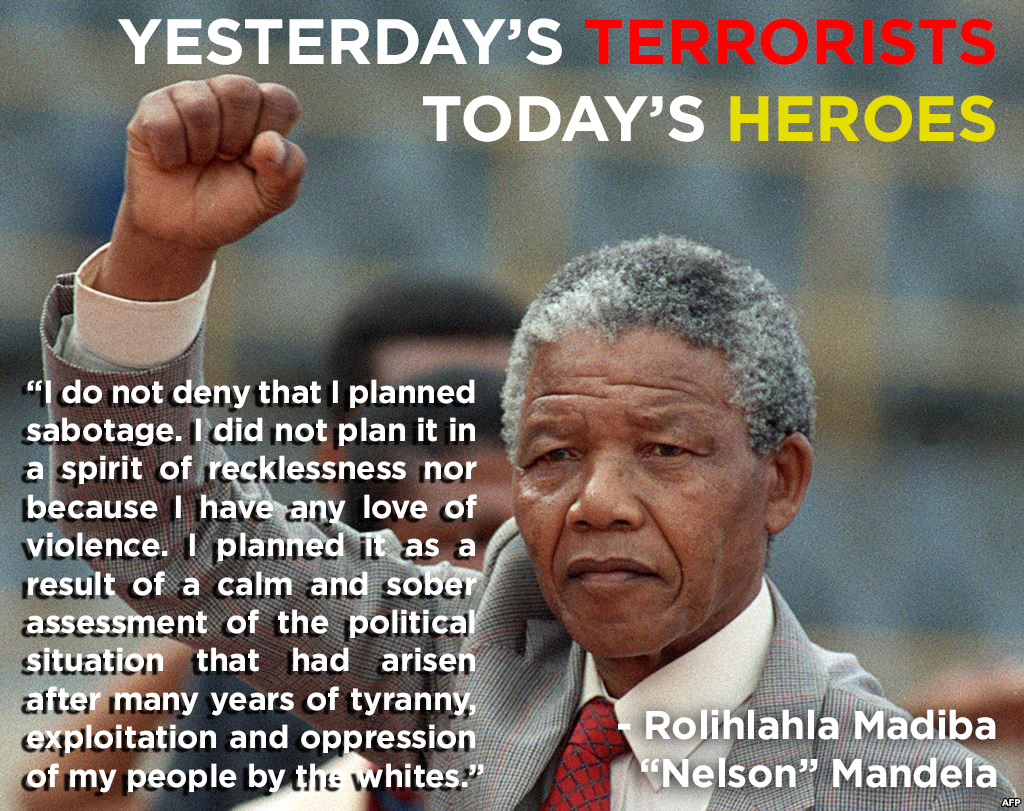
by DGR News Service | Aug 28, 2019 | Property & Material Destruction
By S.O.
Dear readers,
I am one of the researchers on the Underground Action Calendar. I really love it. I can’t help but smile when I read of efforts to try to destroy parts of the infrastructure of civilization. Around the world individuals are burning, bombing, dismantling and sabotaging telephone towers, electrical stations, pipelines, mines, communication cables, cyber networks and more!
But there is a problem in my research efforts at this time and I need your help. Specifically, there seem to be fewer and fewer publications of the incidents (action items) that I need for the calendar. I think that this problem is so pronounced now due to the current political climate in the U.S. where I live.
We are looking for published write-ups of completed attacks on infrastructure. In the past I used a global database (of “terrorist” incidents), which includes items through 2017. I feel that I have largely picked over that database. I am currently using several other sources, but they mostly seem to be limiting themselves to acts of protest and/or civil disobedience. While we recognize that these actions are necessary, they are not what we’re looking to include in the calendar.
Please send me info on or links to sources that you know of in your country. Thank you. Together we can turn the lights off!
About the Underground Action Calendar
The Underground Action Calendar exists to publicize and normalize the use of militant and underground tactics in the fight for justice and sustainability. We include below a wide variety of actions from struggles around the world, especially those in which militants target infrastructure, because we believe this sort of action is necessary to dismantle civilization. Listing an action does not necessarily mean we support or stand behind the goals, strategies, or tactics of those actionists.
This page highlights specific actions. See also our Resistance Profiles for broader information on the strategies, tactics, goals, and effectiveness of various historic and contemporary resistance groups.
If you know of a published action appropriate to add to the Calendar, contact us at newsservice@deepgreenresistance.org

by DGR News Service | Aug 23, 2019 | Direct Action, People of Color & Anti-racism, Strategy & Analysis, White Supremacy
By Norris Thomlinson / Originally published on DGR Hawaii / Featured image by Angela Davis, CC BY 4.0
Once you understand something about the history of a people, their heroes, their hardships and their sacrifices, it’s easier to struggle with them, to support their struggle. For a lot of people in this country, people who live in other places have no faces.”
–Assata Shakur
A World Apart

I grew up in the same country as Assata Shakur, but as a poor black woman, her autobiography reveals an experience a world apart from my own middle class, white male upbringing. She ably captures these differences in a series of anecdotes revealing that she did in fact grow up in a different country: “amerika”, while I enjoyed the facades of democracy, peace, and justice in America. I’ve been aware of the shocking statistics of incarceration rates of people of color, disproportionate distribution of wealth, heartbreaking inequity in education systems, increased exposure to toxins, decreased lifespans, and on and on. But I haven’t read much by black authors about their personal experiences navigating these systems of oppression and injustice. Shakur’s autobiography is surprisingly easy to read and even enjoyable, despite and because of its humorous tragedy, and makes an excellent introduction to a different reality for those of us born into white and/or male privilege.
Beyond her personal insights into the impacts of class, race, and gender, Shakur shares her astute political analysis, and draws a logical line from her childhood acceptance of the systems of America to her adult revolutionary struggle against amerika. Based on voracious reading, observation of the world around her, and careful thinking, she developed a radical analysis of structures of power and how to fight them. She understands that “What we are taught in the public school system is usually inaccurate, disorted, and packed full of outright lies” and that “Belief in these myths can cause us to make serious mistakes in analyzing our current situation and in planning future action.” She links the “interventions” and invasions of the US abroad to its theft of indigenous land and oppression of people of color at home.
Shakur knows none of this is an accident, fixable by asking those in power to change their ways. The people need to fight back, using violence if necessary:
“…the police in the Black communities were nothing but a foreign, occupying army, beating, torturing, and murdering people at whim and without restraint. I despise violence, but i despise it even more when it’s one-sided and used to oppress and repress poor people.”
Horizontal Hostility
Shakur explains that while those in power use schooling, media, the police, and COINTELPRO to divide and conquer those who might oppose them, the solution is simple (though not necessarily easy):
“The first thing the enemy tries to do is isolate revolutionaries from the masses of people, making us horrible and hideous monsters so that our people will hate us.”
“It’s got to be one of the most basic principles of living: always decide who your enemies are for yourself, and never let your enemies choose your enemies for you.”
“Some of the laws of revolution are so simple they seem impossible. People think that in order for something to work, it has to be complicated, but a lot of times the opposite is true. We usually reach success by putting the simple truths that we know into practice. The basis of any struggle is people coming together to fight against a common enemy.”
“Arrogance was one of the key factors that kept the white left so factionalized. I felt that instead of fighting together against a common enemy, they wasted time quarreling with each other about who had the right line.”
Parallels with Deep Green Resistance
It seems many of Shakur’s insights directly informed the Deep Green Resistance book, or the authors came to the same conclusions after studying similar history. For example, Shakur clearly states the need for a firewall between an aboveground and a belowground:
“An aboveground political organization can’t wage guerrilla war anymore than an underground army can do aboveground political work. Although the two must work together, they must have completely separate structures, and any links between the two must remain secret.”
She sees one of the main flaws of the Black Panther Party as having mixed aboveground political work with a militancy more appropriate for a belowground, especially in attempting to defend their offices at all costs against police raids. While understandable as symbolic of their pride and a willingness to fight for what was theirs, the simple reality was that the Panthers weren’t ready to go up against the military might of the state, and it was suicide to attempt to hold this symbolic territory. In asymmetric warfare, you must give way where the enemy is strong, and strike where the enemy is weak.
Perhaps most importantly, Shakur emphasizes several times the necessity of discipline and of careful, logical, long-term planning. She recounts an embarassing situation where she and some friends smoke marijuana in a public park while carrying radical literature, risking beatings or arrest by relinquishing full control of their faculties. After another revolutionary group helps them out of their precarious situation, a dazed Shakur resolves to take the struggle more seriously. This contrasts sharply with the drug- and sex-fueled Weathermen and their contemporaneous white radicals, whose self-indulgence in machismo and rebelliousness resulted in a strategy of instigating fistfights and rioting in the streets.
It reassures me that so many of Shakur’s hard-won lessons are foundational to Deep Green Resistance, as it reinforces my confidence in DGR as a well-researched analysis of historical movements and a solid guide to proceeding from here:
“There were sisters and brothers who had been so victimized by amerika that they were willing to fight to the death against their oppressors. They were intelligient, courageous and dedicated, willing to make any sacrifice. But we were to find out quickly that courage and dedication were not enough. To win any struggle for liberation, you have to have the way as well as the will, an overall ideology and strategy that stem from a scientific analysis of history and present conditions.
[…]
Every group fighting for freedom is bound to make mistakes, but unless you study the common, fundamental laws of armed revolutionary struggle you are bound to make unnecessary mistakes. Revolutionary war is protracted warfare. It is impossible for us to win quickly. […] One of the hardest lessons we had to learn is that revolutionary struggle is scientific rather than emotional. I’m not saying that we shouldn’t feel anything, but decisions can’t be based on love or on anger. They have to be based on the objective conditions and on what is the rational, unemotional thing to do.”
Read This Book
If you want to better understand racism, read this book. If you enjoy a well-told story of a unique and fascinating life, read this book. If you’re interested in historical revolutionary movements, read this book. If you’re interested in a modern revolutionary movement, read this book, read Deep Green Resistance, and let’s start putting the theory into practice.
“It crosses my mind: i want to win. i don’t want to rebel, i want to win.”
–Assata Shakur
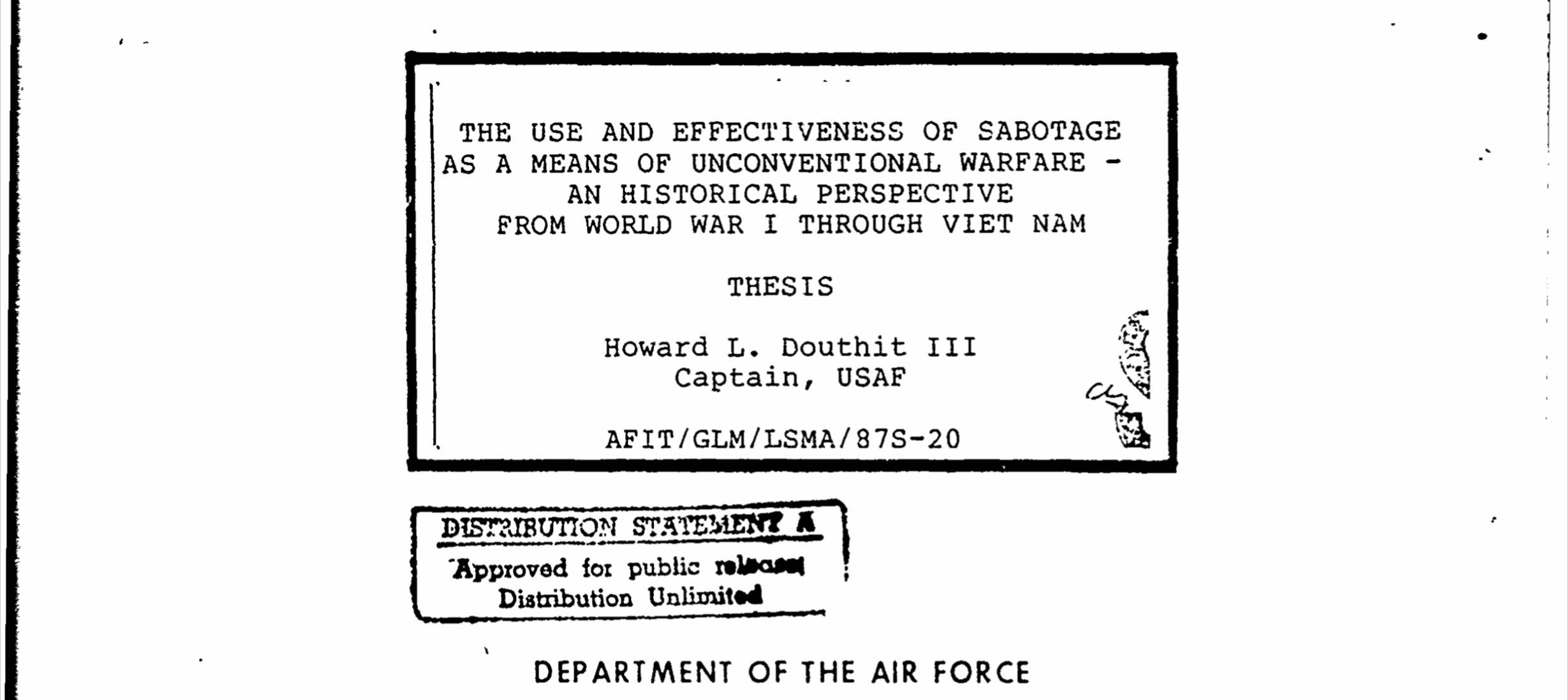
by DGR News Service | Aug 14, 2019 | Building Alternatives, Direct Action, Property & Material Destruction, Strategy & Analysis
Editors note: sabotage is a key tactic for asymmetrical conflicts, such as the struggle to defend the planet from capitalism and industrial civilization. This material is excerpted from a paper written by U.S. Air Force Captain Howard L. Douthit III. You can read the full paper on Archive.org.
The Use and Effectiveness of Sabotage as a Means of Unconventional Warfare — an Historical Perspective from World War I Through Vietnam
By USAF Captain Howard L. Douthit III
To be effective, sabotage had to accomplish what is expected of any offensive military operation–inflict damage on the enemy’s ability to wage war. Again, history supported the thesis that sabotage is an effective means of warfare. Sabotage was used against both strategic and tactical targets. It was proven capable of being used near the front line, in the rear areas, and even in support areas out of the theater.
To be sure, sabotage had to be performed properly to obtain the desired results. However, that is true of any operation. Also, as with any type of operation there were failures to go along with the successes. The failures seen, however, seemed to be due more to faulty planning, inadequate time for planning, inadequate or improper equipment, and not following the plan of operation rather than a failure due to the actual act of sabotage. Again, these problems could spell failure for any operation. The multiple target types that could be hit in the multiple depths of operation, the ability of sabotage to accomplish what conventional operations many times could not, the flexibility of not necessarily needing sophisticated equipment, and the seeming lack of effective countermeasures shown all bear out the logical conclusion that sabotage was deemed effective in history. Military leaders who employed sabotage saw its effect on the enemy and increased its use. Enemy leaders wrote about the ill effects it had on their side. In all these ways, sabotage proved itself effective in history.
Lessons learned
There are several lessons to be learned from this research effort:
- Sabotage can be accomplished after the person(s) has infiltrated an organization, industry or factory. This sabotage could take on the form of physical destruction of material, facilities or personnel.It could also take on the form of subversion in an effort to reduce or stop production.
- Underground/resistance movements make use of printed material to spread instructions on how to commit sabotage.
- Timing of the sabotage could mean the difference between knocking out an asset that could be used by both sides or only hindering the enemy. For example, blowing up a bridge prematurely to prevent enemy use may impede a possible advance should the momentum of a battle turn. Timing can also spell the difference between knocking out one asset or several assets at once (eg, just blowing up a section of train track or waiting to also demolish a supply train as well).
- Sabotage may sometimes succeed when conventional forces cannot. Skorenzy’s ability to blow up a bridge that stood the test of 500 failed dive bomber runs illustrated this well.
- History does not point to an effective countermeasure to sabotage.
- Sabotage can be used to draw troop strength from vital battle zones.
- Selective sabotage is used to destroy or render inoperable assets not easily replaced or repaired in time to meet the enemy’s crucial needs. The required down time of the target depends on the target itself. For example, a crucial route might only need to be impassable for several days near the front, whereas an oil refinery might need to down for months to show the effects of its loss on a war.
- Sabotage can be used against both tactical and strategic targets.
- Any nation, rich or poor, large or small can effect sabotage against an aggressor.
- Sabotage is an economical form of warfare, requiring only a mode of transportation (possibly walking), a properly trained individual, and an applicable sabotage device.
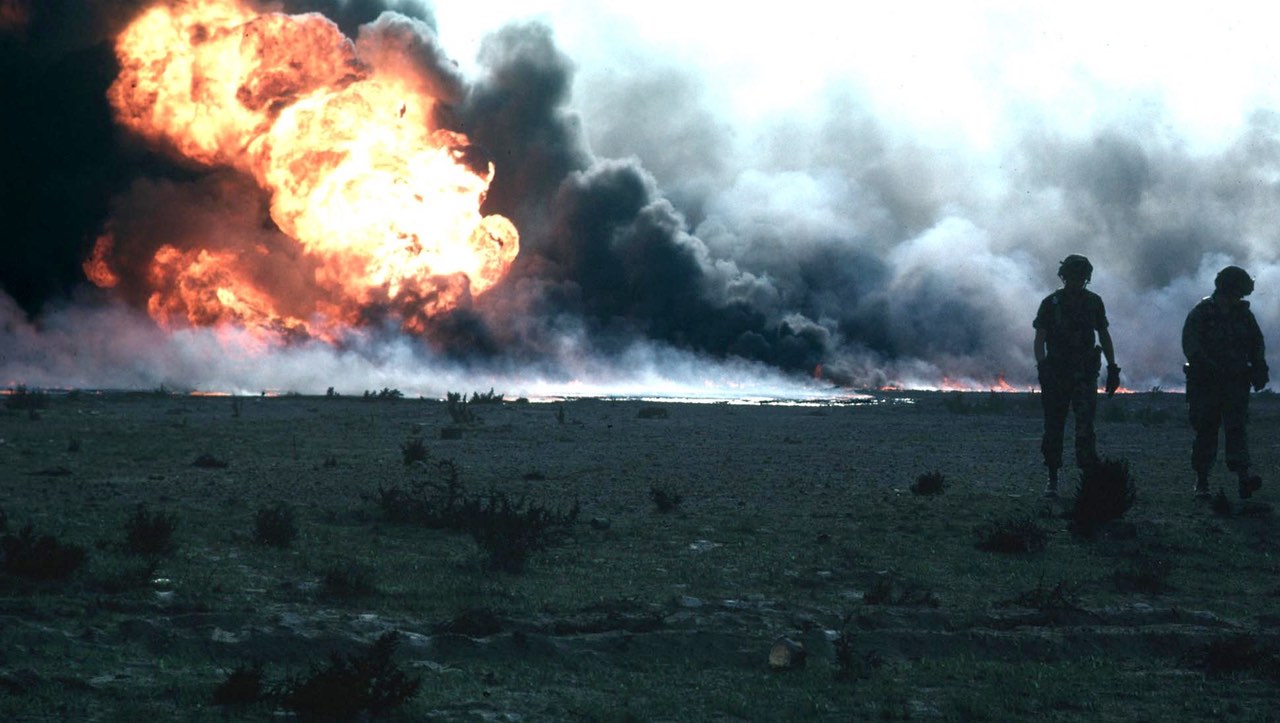
by DGR News Service | Aug 12, 2019 | Defensive Violence, Direct Action, Property & Material Destruction
Editors note: this material is excerpted from a Deep Green Resistance database called “Resistance Profiles,” which explores various movements, their strategies and tactics, and their effectiveness. Image credit: public domain.
Movement for the Emancipation for the Niger Delta (MEND)
- Active: 2005 – 2013
- Location: Nigeria
- Type: Underground Resistance Movement
- Success: Medium
Goal
Majority or total control of oil production/revenues in the Niger Delta (for the Ogoni people) and withdrawal of the Nigerian military from the Niger Delta.
Strategy
Totally destroy the capacity of the Nigerian government to export oil in the Niger Delta, force the multinational oil companies to discontinue operations, and likely precipitate a nationwide budgetary and economic crisis.
Tactics
- sabotage of oil infrastructure
- bombing near military, government or oil industry infrastructure or buildings
- theft
- guerrilla warfare
- kidnapping of foreign oil workers for ransom (MEND has a very good record of returning them unharmed)
MEND uses speed boats in swarm-based maneuvers to quickly attack targets in succession. Multiple highly maneuverable, well trained and armed units have kept the government and Shell’s defensive systems off-balance defending their sprawling networks (1,000 oil wells, 6,000 km of pipeline over 70,000 square miles).
Very effective use of system disruption: targets have been systematically and accurately selected to completely shut down production and delay and/or halt repairs.
Organization
MEND, an umbrella organization, has evolved into a
conglomeration of distinct militant groups with constantly shifting alliances and loyalties. Command and control is believed to be hierarchical. Leaders are frequently deposed or replaced by rivals, due to internal conflicts over proceeds from criminal and political activities, and due to Ijaw tradition of choosing tribal leaders on a rotational basis
Above/Underground
Underground cells with a few spokesmen that communicate with the international media
Security
Leaders are always on the move and extremely cautious. They do not take telephone calls personally, knowing that soldiers hunting for them have electronic devices capable of pinpointing mobile phone signals. During raids, fighters wear masks to protect their identity. All communication with the media is conducted using aliases. MEND does not reveal identities of its rank and file and conducts all recruiting clandestinely. The fluid and contradictory organization structure may or may not be by design but is very effective at obscuring the leadership and increasing the operational security of key individuals
Recruitment
Draws its fighters from communities across the delta: ethnic militias in the west and from cults (criminal gangs) in the east
Effectiveness
Has not yet achieved its goal, but its strategy and tactics have been effective, resulting in a cut of more than 28 percent of Nigeria’s oil output from 2006 to 2009. In August 2009, the government offered a 60 day amnesty: militants who handed in their weapons were pardoned for their crimes, given job training and were paid US $410 per month until they found work. But the ceasefire and amnesty ended in December when MEND attacked a Shell/Chevron pipeline amidst questions about President Yar’ Adua’s health and impatience with the slow pace of job growth.
Further learning
Articles
Films
- Sweet Crude (2007)
- Delta Boys (2012)
Books
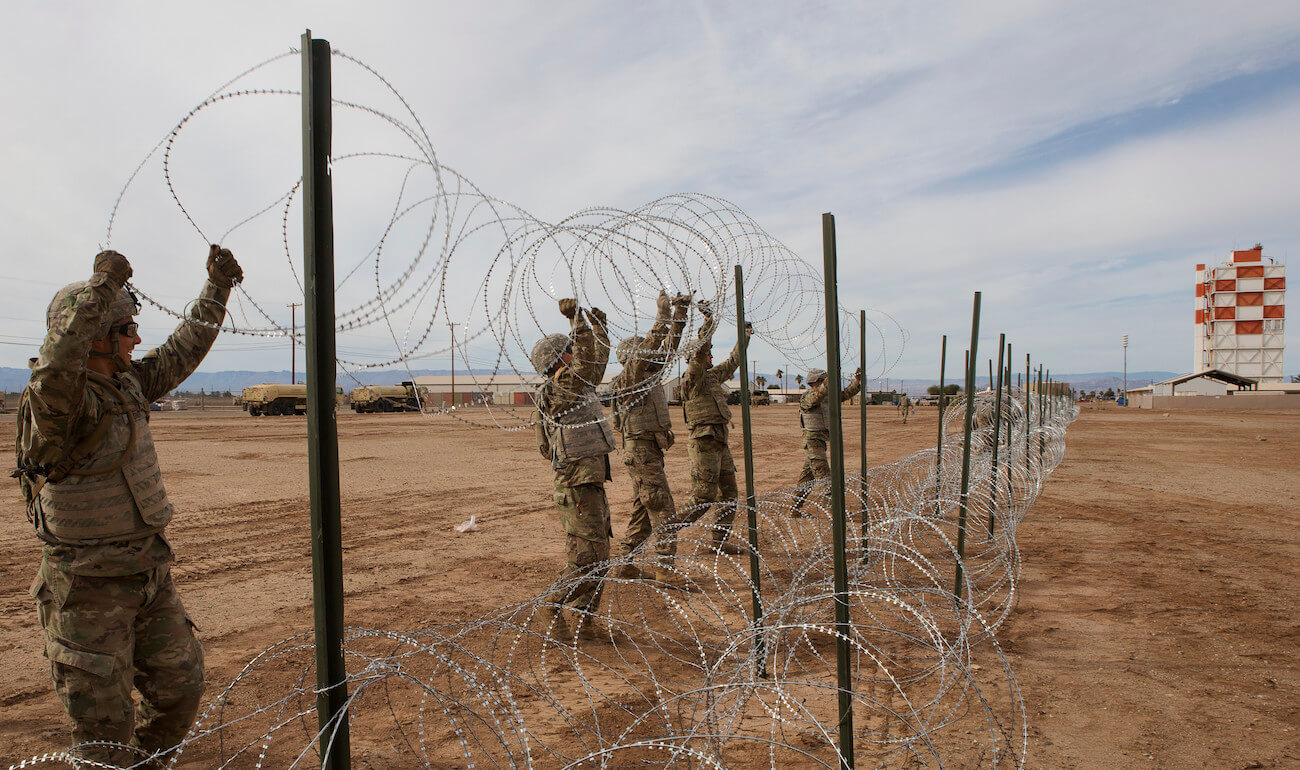
by DGR News Service | Jul 31, 2019 | Property & Material Destruction, White Supremacy
In mid-July, an armed attack on ICE facilities in Tacoma, Washington took place. Here’s a brief summary of what happened:
Will Van Spronsen… was killed [on July 13th] while carrying out a raid against a migrant concentration camp in Tacoma, Washington State. Van Spronsen is thought to be the first person killed attempting to take direct action against the US deportation system, which for months has faced heavy criticism over its use of concentration camps to break up families and detain migrant children.
The 69-year-old, known as an anti-fascist and campaigner against migrant detention, was shot dead by four police officers as he attempted to set fire to deportation buses stationed at the Northwest Detention Center (NWDC), a few hours after a peaceful protest against the facility had been held.
– Via Freedom News
DGR Response to Armed Attack on ICE Facility
Deep Green Resistance recognizes, first and foremost, that Immigration and Customs Enforcement is nothing more than the paramilitary wing of the settler nation. Tacoma, like all of so-called North America, rests on stolen land – as an illegitimate occupier, this government has no right to establish or enforce imaginary borders across the territory of the Coast Salish people or any other indigenous community.
DGR affirms the struggle against all forms of xenophobia and white supremacy, and we stand in solidarity with those who resist ICE and its glorified ethnic cleansing. Direct action of this kind against the American immigration enforcement is justified and moral.
However, we also affirm the need for strategic, organized resistance that is capable of striking decisive blows against the settler state. Lone-wolf attacks of this nature are unlikely to achieve much beyond the symbolic. While we honor Van Spronsen’s bravery, we encourage activists to evaluate actions like these and consider more effective methods and strategies.
Decisive Ecological Warfare, the strategy of Deep Green Resistance, provides a detailed roadmap for creating and maintaining a militant resistance movement capable of overturning the white supremacist settler state. As aboveground activists, we must work to harness and direct the kind of fury and passion that leads to attacks like these, away from individual expressions of rage and towards organized militancy on behalf of the planet and all oppressed peoples.







